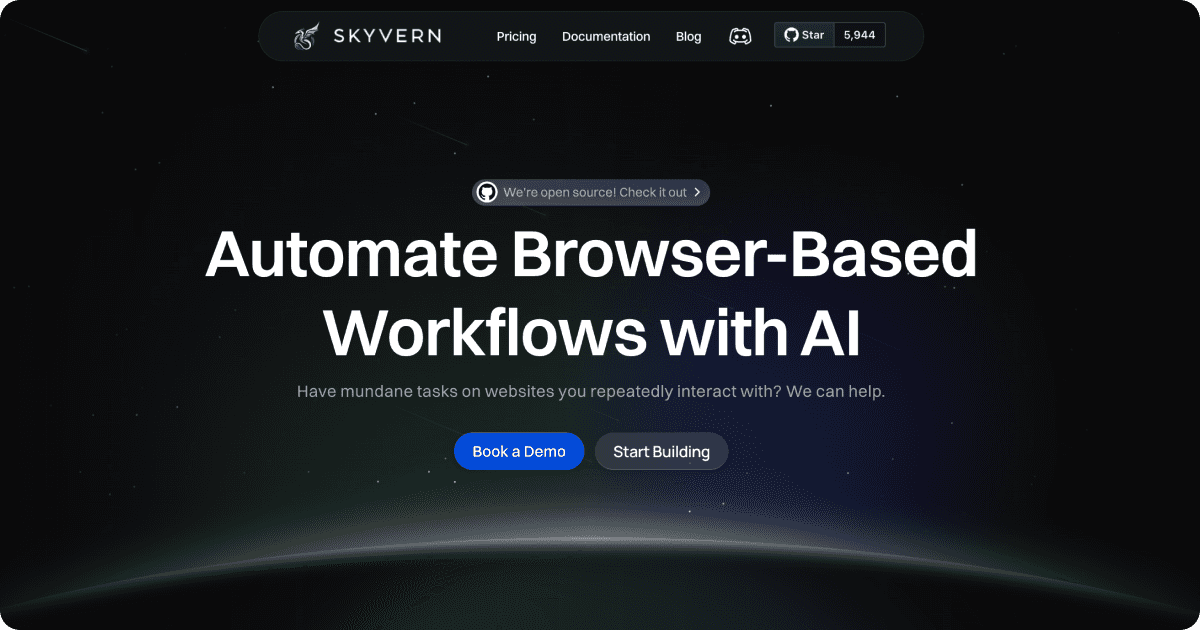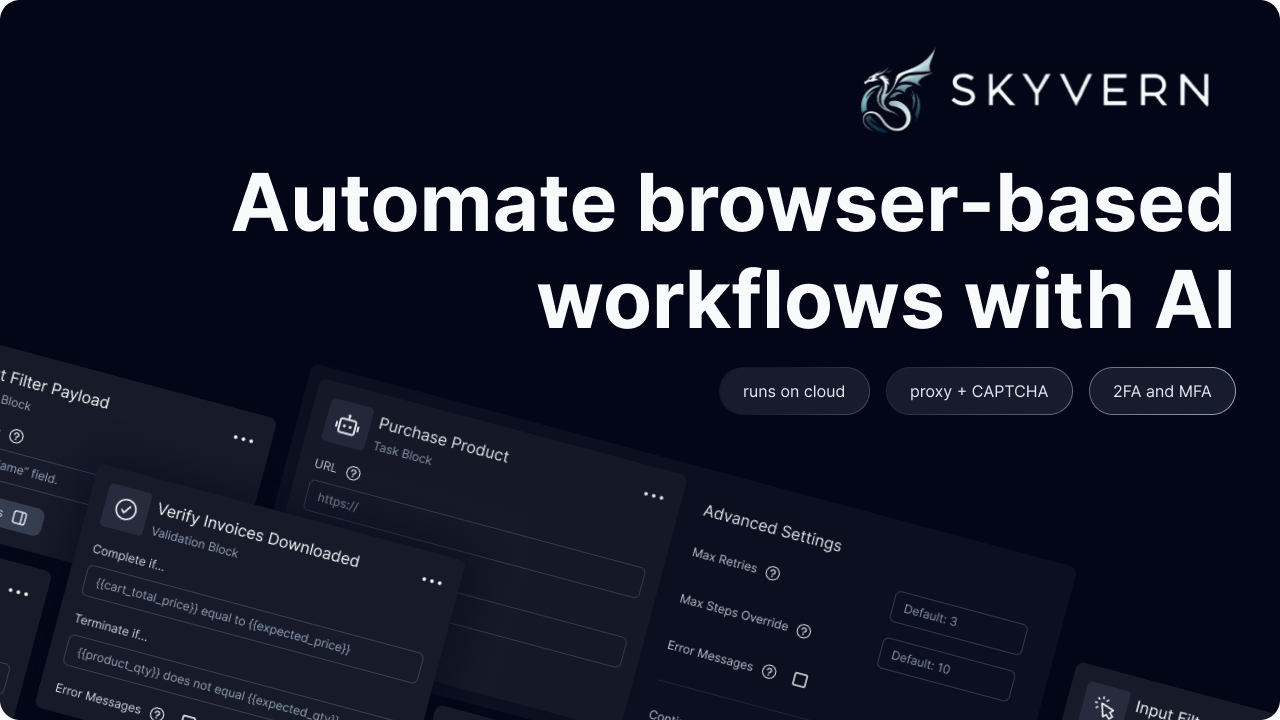
Table of Contents
Overview
Tired of spending countless hours on repetitive online tasks? Imagine a world where you could simply tell your computer what to do, and it would handle the tedious work for you. Enter Skyvern 2.0, an open-source platform that’s revolutionizing browser automation with its natural language interface. This innovative tool lets you build intelligent browser agents that can tackle everything from job applications to data scraping, all without needing to be a coding expert. Let’s dive into what makes Skyvern 2.0 a game-changer.
Key Features
Skyvern 2.0 is packed with features designed to make browser automation accessible and powerful:
- Natural Language Browser Agent Builder: Create automation agents by simply describing the task you want to accomplish in plain English. No coding required!
- Open-Source Architecture: Benefit from a transparent and customizable platform that you can adapt to your specific needs.
- Web Automation Capabilities: Automate a wide range of web-based tasks, including form filling, button clicking, and data extraction.
- Support for Complex Workflows: Handle intricate, multi-step processes with ease, ensuring your automation agents can tackle even the most challenging tasks.
- State-of-the-Art Performance on WebVoyager Benchmark: Skyvern 2.0 achieves a leading score on the WebVoyager benchmark, demonstrating its superior performance in navigating and interacting with websites.
- Integrates with Enterprise Tools: Seamlessly connect Skyvern 2.0 with your existing enterprise systems for streamlined workflows and enhanced productivity.
How It Works
Skyvern 2.0 simplifies browser automation by translating natural language instructions into executable actions. Here’s how it works: You start by describing the task you want to automate in plain English. Skyvern then interprets your intent, constructs a logic-based flow, and deploys an agent to navigate web pages. This agent autonomously fills forms, clicks buttons, and extracts data, all based on your initial instructions. It’s like having a virtual assistant that understands your needs and executes them flawlessly.
Use Cases
Skyvern 2.0 opens up a world of possibilities for automating repetitive online tasks:
- Automating Repetitive Online Tasks: Free up your time by automating tasks like checking email, updating social media, or managing online accounts.
- Filling Out Job Application Forms: Streamline your job search by automating the tedious process of filling out online application forms.
- Lead Generation via Contact Form Automation: Generate leads more efficiently by automating the process of filling out contact forms on websites.
- Web Scraping for Research or Sales: Gather valuable data from websites for research purposes or to identify potential sales leads.
- Onboarding Automations for HR Workflows: Simplify the employee onboarding process by automating tasks like creating accounts and assigning training.
Pros & Cons
Like any tool, Skyvern 2.0 has its strengths and weaknesses. Let’s take a look:
Advantages
- Highly Accessible via Natural Language: Makes browser automation accessible to users without coding experience.
- Open-Source and Flexible: Offers a customizable and adaptable platform that can be tailored to specific needs.
- Strong Performance on Industry Benchmarks: Demonstrates superior performance in navigating and interacting with websites.
Disadvantages
- Requires Basic Understanding of Workflows: Users need a basic understanding of how tasks are structured to effectively automate them.
- Limited Visual UI for Non-Technical Users: The lack of a comprehensive visual UI may make it challenging for some non-technical users to get started.
- Potential Variability in Web Compatibility: As with any browser automation tool, there may be occasional compatibility issues with certain websites.
How Does It Compare?
When considering browser automation tools, it’s important to understand how Skyvern 2.0 stacks up against the competition. BrowserFlow offers a more visual UI, which can be appealing to some users, but it sacrifices some of the flexibility that Skyvern 2.0 provides. Robocorp, on the other hand, is more enterprise-focused and requires Python programming knowledge, making it less accessible to non-technical users compared to Skyvern 2.0’s natural language approach.
Final Thoughts
Skyvern 2.0 is a powerful and accessible platform that’s democratizing browser automation. Its natural language interface, open-source architecture, and strong performance make it a compelling choice for anyone looking to automate repetitive online tasks. While it may require a bit of workflow understanding, the benefits of increased efficiency and productivity are well worth the effort. If you’re ready to reclaim your time and automate your online life, Skyvern 2.0 is definitely worth exploring.

